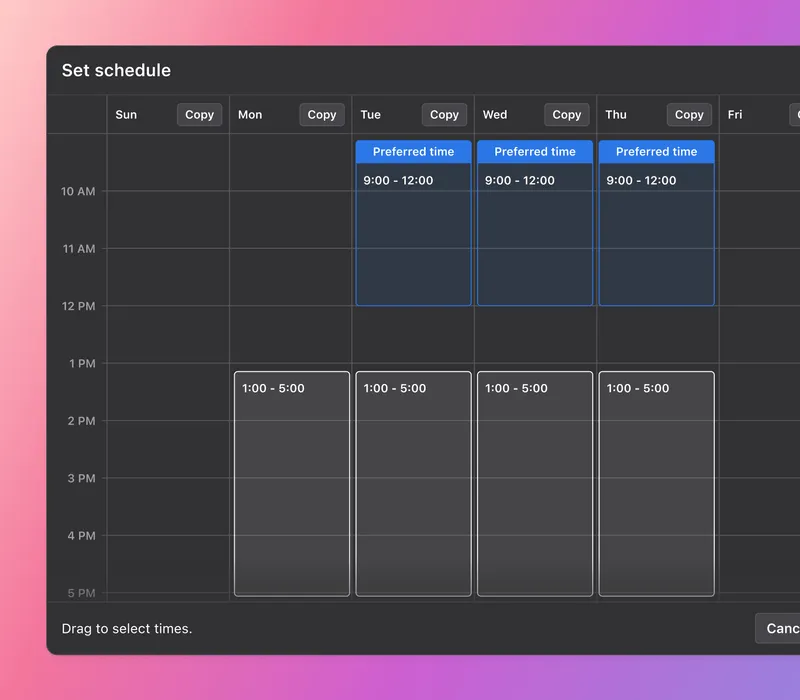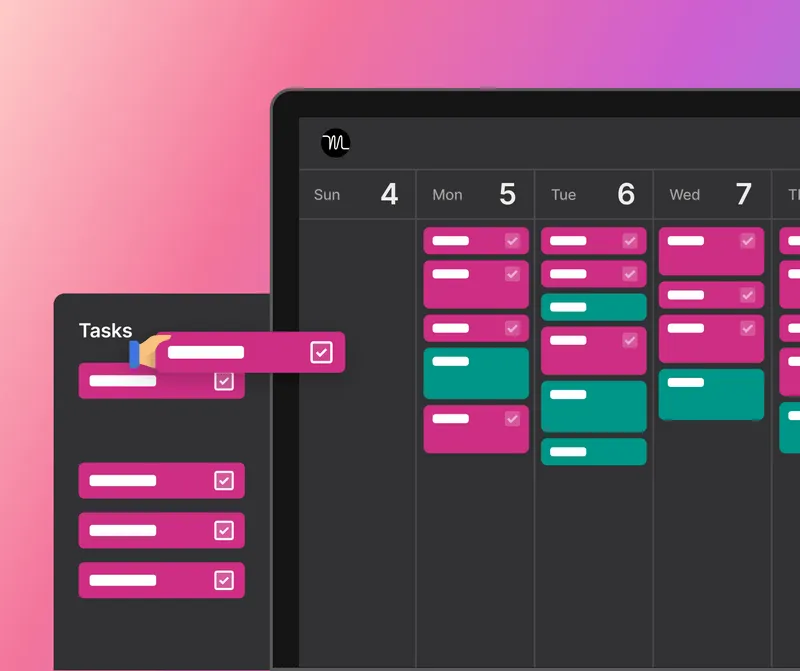Too many managers spend hours constructing a meticulous schedule — only to have it thrown out of order because Harold from Marketing is sick and can’t make it to the team meeting.
All those hours of planning wasted.
If you’re tired of squeezing your team into rigid schedules that don’t accommodate real life, this article is for you.
You’ll learn how to create flexible and strategic plans. We’ll explore the importance of effective planning and look at 12 practical planning tips that’ll help you stay organized and manage your team effortlessly.
Ready to boost your productivity? Let’s dive in.
The importance of effective planning
Thorough planning helps you and your team maintain momentum throughout your workday. You won’t grind to a halt to determine what to focus on next because you have your plan laid out in front of you.
Effective planning helps your business in the following ways:
Gives you direction
Action without direction is useless.
But when you have a clear goal in mind, you can outline the journey your company will take. The planning stage is the time to define your goals. With this direction clearly laid out, your employees can stay motivated and productive.
Outlines your desired outcomes
Keeping the big picture in mind makes it easy to break long-term goals down into smaller daily or weekly tasks. Your employees will know exactly what you expect from them, and there will be no chance you’ll miss the mark!
Determines your primary KPIs
Key performance indicators (KPIs) tell you when the company is moving in the right direction and when it needs realignment. Project planning helps you outline your primary KPIs, allowing you to easily track your progress as soon as the work begins.
Saves time
Planning effectively before working on a project gives you and your team next-step knowledge throughout the project’s duration. As a result, you won’t lose momentum trying to decide which task to focus on next.
Creates accountability
Effective planning outlines who’s responsible for what at the start of the project, so this information is always clear to your employees.
 |
12 planning tips for improving workplace productivity
Improving workplace productivity becomes effortless when you’re working off a foundation of solid planning. You can help your team work efficiently by learning how to plan for ultimate workplace productivity.
Use the planning tips below to maximize your team’s productivity.
1. Set aside planning time every day
When planning a project, you’ll typically set daily plans for your team to follow in the coming weeks. These plans are designed to be flexible and will change as the project progresses.
Set aside time every day to review your team’s progress and update your schedule, priorities, and to-do list.
Daily planning builds a habit of evaluation and forward-thinking, helping you stay organized and on track to complete your project goals.
Whether you set aside five minutes or half an hour to review and update your plan, careful planning gives you a chance to pivot the team’s focus when necessary.
2. Break projects into milestones
Staying on schedule is one of the biggest concerns for team leaders and project managers. Make it easier for your employees to meet a project’s deadline by dividing the project into several milestones or mini-deadlines.
Scheduling milestones means you’ll know ahead of time if your final deadline is unrealistic. This allows you to reprioritize and adjust your expectations as needed.
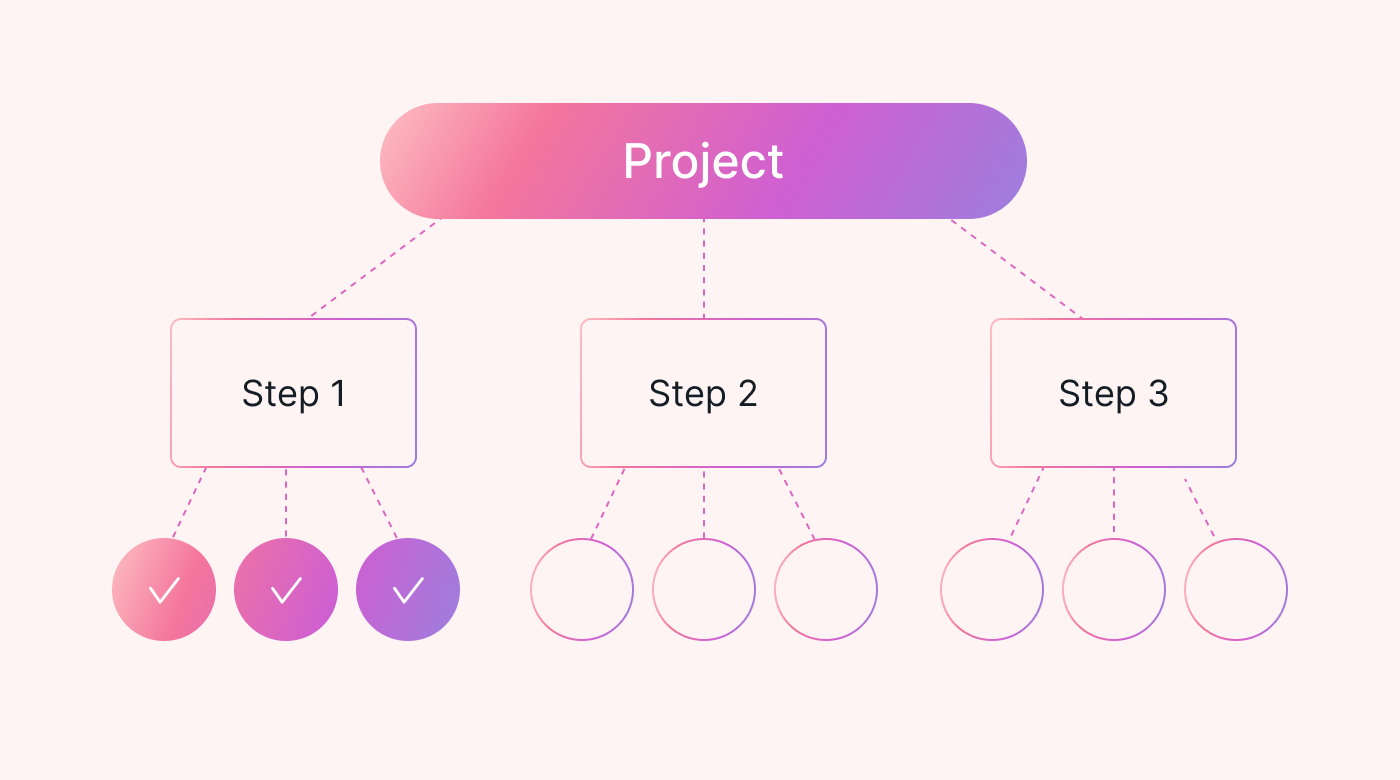 |
It’s recommended that you set between 10 and 13 milestones per project. Staying within this guideline prevents over-preparing, fragmenting the big picture, and ultimately delaying your project timeline.
3. Task-batch
Task-batching is a scheduling and time management technique where you group similar tasks together and work on them in one go. It removes the switching cost associated with multitasking by helping you focus on one activity at a time.
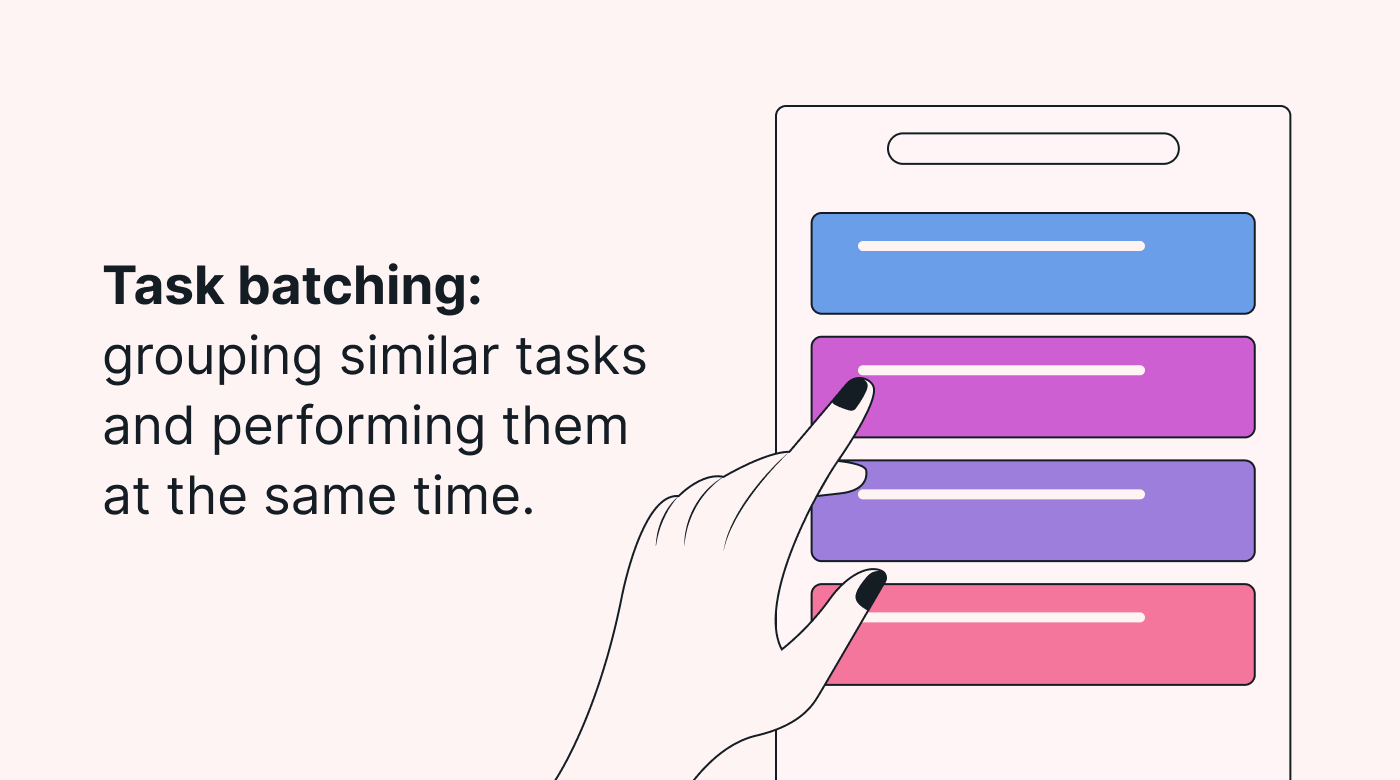 |
For example, you could task-batch your daily communications to happen at the start of the work day or right after your lunch break. After your communication slot is over, you won’t get distracted by emails or phone calls that can break your concentration.
4. Set short- and long-term goals
Despite most people claiming to understand the benefits of goal setting, 80% never set goals.
Goals give you a sense of direction and purpose by defining your priorities, keeping you on schedule, and helping you focus on the tasks that matter.
Setting short- and long-term work goals for your team helps them stay on track.
Although there are hundreds of different ways to distinguish between short- and long-term goals, you can think of them in this way:
- Long-term goals deal with your vision for the company. Where do you want the business to grow? How do you want your team to develop?
- Short-term goals focus on actionable steps that lead toward a long-term goal. What will move you closer to achieving your vision? What tasks, projects, or plans can you accomplish to build your dream company?
5. Know your dependencies
A dependency is a relationship between two tasks that depend on one another’s progress. For example, a Finish to Start dependency means that you can’t begin working on Task B until you’ve completed Task A.
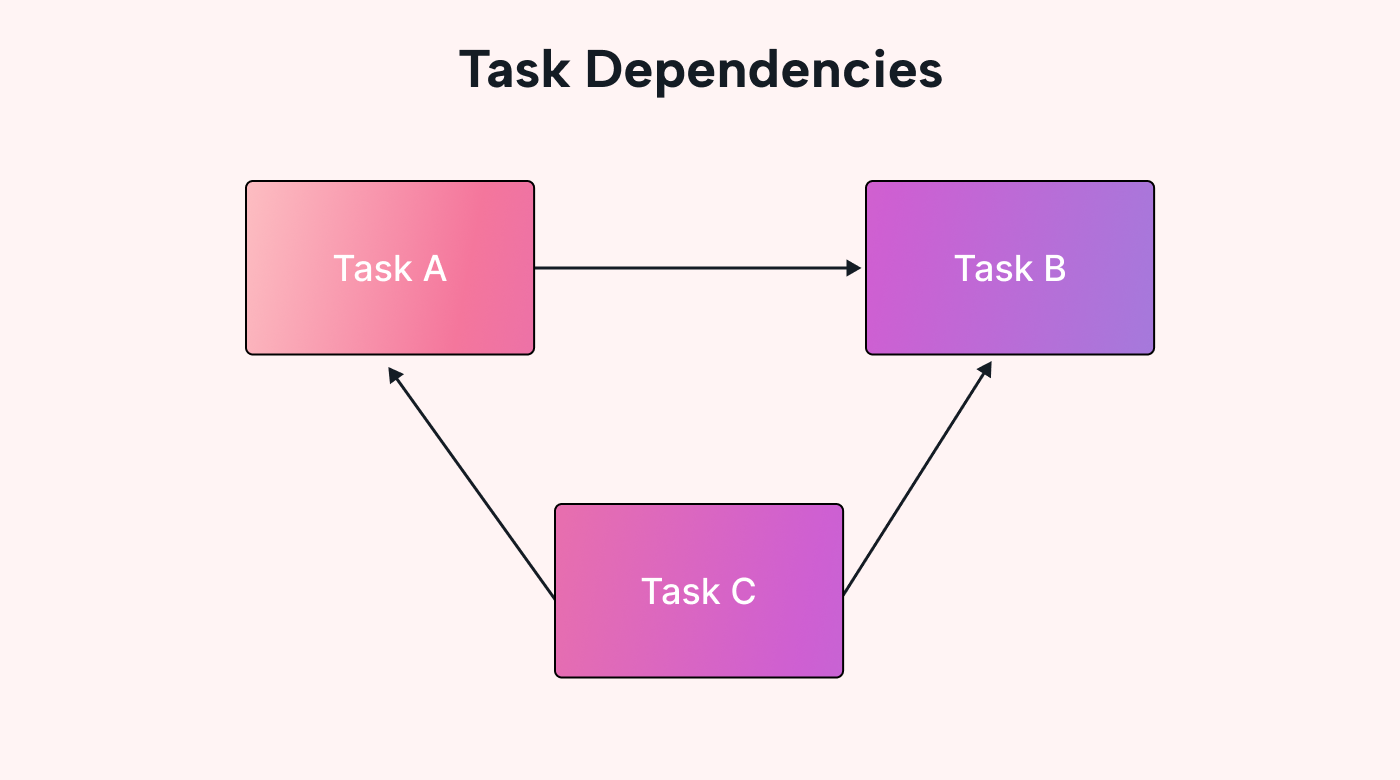 |
Knowing your dependencies before you start scheduling project tasks, you can prevent your team from getting stuck halfway through their to-do list because they’re waiting on someone else to finish something.
6. Use a planner
Whether you prefer paper or digital, a planner is your catch-all space for to-dos, priorities, goals, and schedules. It helps you keep track of what’s expected of you and what you expect from your team.
If you’re handling multiple projects and people, a digital master planner is the more flexible and robust option. The best digital planner will integrate with your favorite apps, allow you to access calendars from multiple devices, and make it easy for you to update your schedule when needed.
7. Coordinate team schedules
With the rise of remote working and hybrid workplaces, coordinating team schedules has become trickier than ever.
Using an online team calendar simplifies scheduling by storing and displaying your team members’ respective availability all in one place. You can find the perfect time slot for meetings without endless email chains or Slack messages.
8. Learn your patterns
Learning your unique work patterns helps you maximize your productivity. When you know how you work, you can better schedule your time to match your natural productivity rhythm.
Do mid-day meetings distract you and drain your energy? Schedule all your meetings on one day of the week.
Are you an early bird? Schedule creative, high-energy work for the morning, and leave mindless or quick tasks for later in the day when your energy dips.
Knowing and working with your natural rhythm makes it easier to maintain a steady level of productivity without risking strain or burnout.
9. Identify priorities
When planning your day, week, or month, keep your priority list in mind to ensure the important and urgent project tasks are completed first.
Urgency refers to how quickly you need to complete a task. Importance refers to the benefit the task brings once it’s completed.
10. Make your schedule flexible
According to a 2021 study, 61% of project leaders feel an increased need for organizational adaptability in their businesses. Flexible schedules can adapt to accommodate emergencies, changes in priority, difficult tasks, or unforeseen challenges.
When creating a schedule, focus on the outcome you want for the week, not the process. Leave room for changes in your daily or weekly plans so that your team can maintain momentum and productivity even through unexpected circumstances.
11. Keep track of responsibilities
Make sure you set aside time to look at your to-do list and calendar every day. This helps ensure you stay on schedule and on top of your responsibilities.
Motion’s task manager is a powerful online tool for keeping track of your to-dos in an easy-to-access and easy-to-update space, making scheduling and tracking your daily tasks feel effortless.
12. Review your plan often
Frequently review your goals and plans to make sure they align with your big-picture vision and company values.
Set aside time to review your plans weekly or monthly. Ask yourself whether your plans are helping you reach those goals or distracting you from your core motivation, and make adjustments as necessary.
If your current planning process isn’t helping you stay on track, try something different. After a few months of trial and error, you’ll land on a planning system that keeps you motivated, organized, and productive.
Are you ready to build adaptable and effective plans?
As a manager, you know that most teams get nothing done without a plan. Knowing how to set up effective plans is essential for keeping your team on track, on time, and motivated.
The tips above can help you as you design weekly and monthly plans that are both flexible enough to accommodate last-minute changes and robust enough to ensure you meet your deadlines and goals.
Try Motion for free to see firsthand how their intelligent, robust, and flexible AI calendar can shave hours off your planning time every week.


